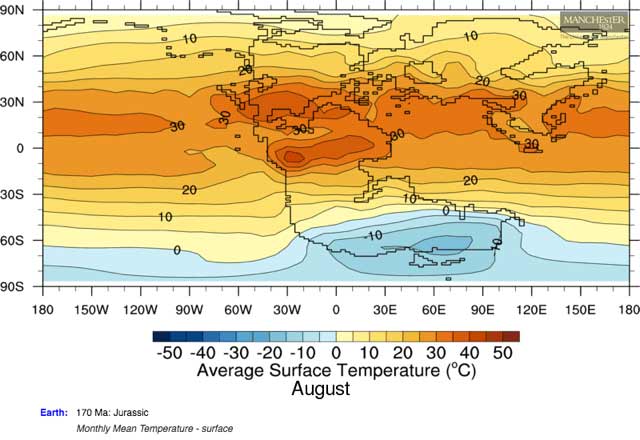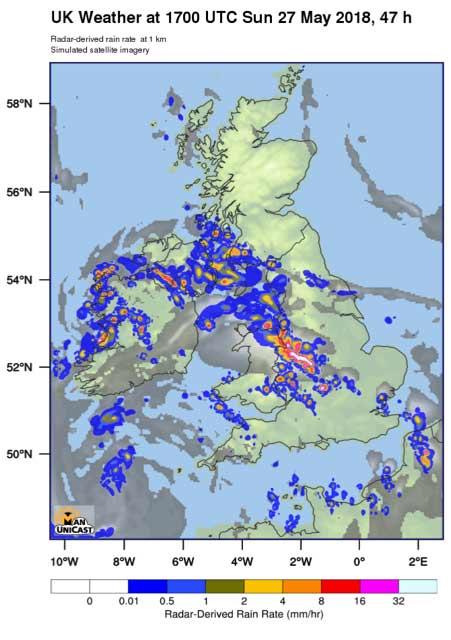Atmospheric Modelling
Within the Department of Earth and Environmental Science, we model the Earth system at a wide range of spatial and temporal scales.
We use climate models to study past Earth climates and the factors that control the climate on planets. We use a climate model that runs fast so that we can obtain lots of output in a short period of time, allowing many years of simulated climate.
One example is that our research group has modelled the Triassic and Jurassic climates, allowing us insight into how the climate was changing during this time, helping us to understand the changes in climate that may have led to dinosaur migration. Our climate model portal is Build Your Own Earth, which is freely available online for anyone to interact with the output from these climate models. Build Your Own Earth was shortlisted in the Best eLearning category at the 2018 Reimagine Education Awards in Philadelphia.

We use weather models, which are run at a higher spatial resolution, to better understand weather phenomena such as convective storms and hurricanes and their impacts. We also run daily weather and air-quality forecasts for Europe, the North Atlantic Ocean, and the UK through our web portal called ManUniCast. ManUniCast was the first to provide freely available weather forecast output for the UK in real time. ManUniCast was shortlisted for the Times Higher Education award for Outstanding Digital Innovation in Teaching or Research in 2015. We also have collaborations with the UK Met Office running ambitious model simulations that are providing a step change in our understanding of how climate change will affect future weather. We use the outputs of these models to better predict changes in high-impact weather, and the societal impacts of climate change.

These climate and weather models are not just for our research, but for our undergraduate students as well. They are used in our undergraduate courses, as well as serving as the basis for dissertations. By making these models available to our students, we are better preparing them for their future where such models are used in corporate and governmental decision making and setting policy, as well as in scientific research.
